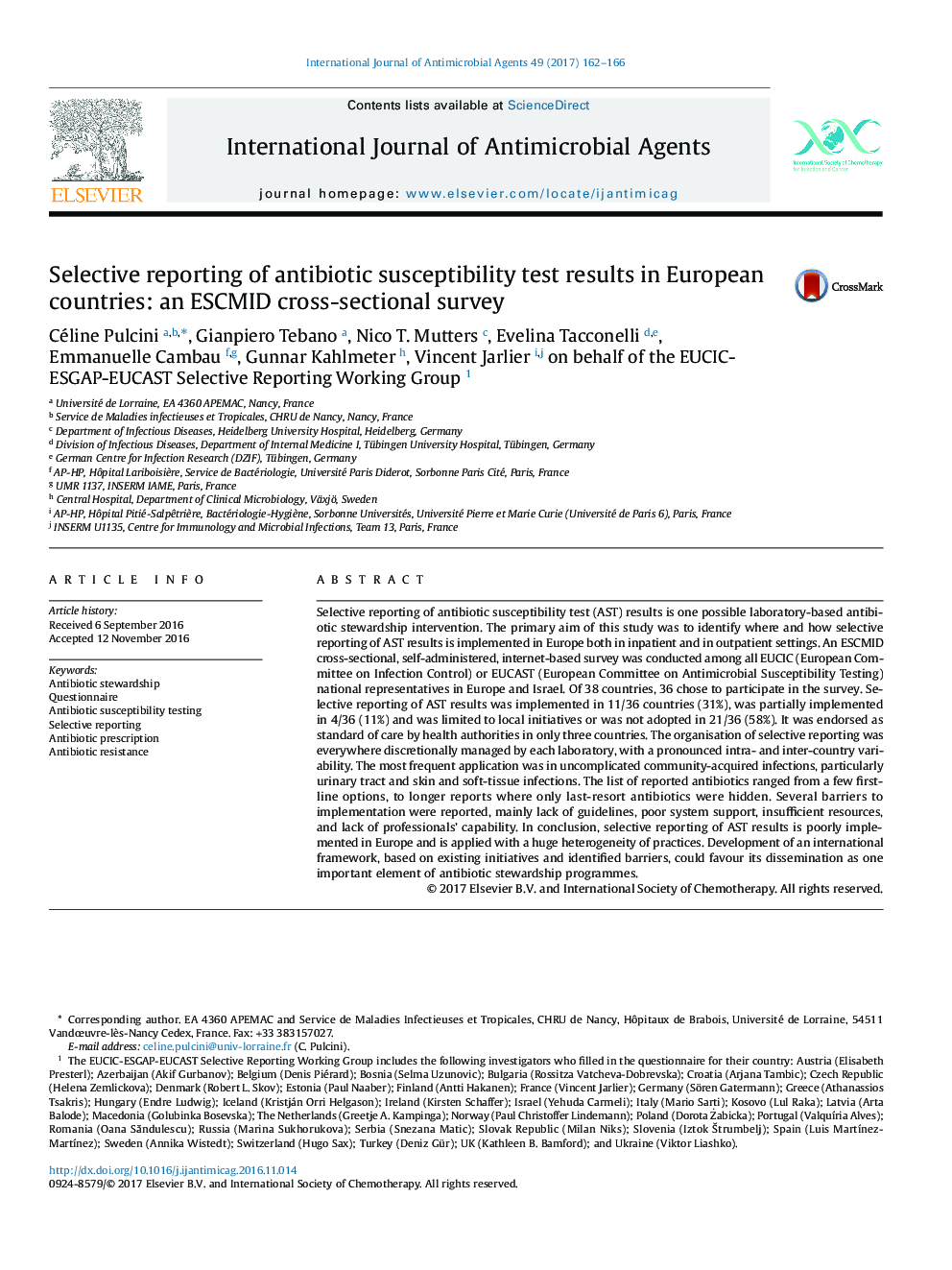| Article ID | Journal | Published Year | Pages | File Type |
|---|---|---|---|---|
| 5666967 | International Journal of Antimicrobial Agents | 2017 | 5 Pages |
â¢Selective reporting of antibiotic susceptibility test results influences antibiotic prescribing.â¢Cross-sectional survey conducted in 36 European countries.â¢Selective reporting is poorly implemented in Europe.â¢Several barriers to implementation were reported.
Selective reporting of antibiotic susceptibility test (AST) results is one possible laboratory-based antibiotic stewardship intervention. The primary aim of this study was to identify where and how selective reporting of AST results is implemented in Europe both in inpatient and in outpatient settings. An ESCMID cross-sectional, self-administered, internet-based survey was conducted among all EUCIC (European Committee on Infection Control) or EUCAST (European Committee on Antimicrobial Susceptibility Testing) national representatives in Europe and Israel. Of 38 countries, 36 chose to participate in the survey. Selective reporting of AST results was implemented in 11/36 countries (31%), was partially implemented in 4/36 (11%) and was limited to local initiatives or was not adopted in 21/36 (58%). It was endorsed as standard of care by health authorities in only three countries. The organisation of selective reporting was everywhere discretionally managed by each laboratory, with a pronounced intra- and inter-country variability. The most frequent application was in uncomplicated community-acquired infections, particularly urinary tract and skin and soft-tissue infections. The list of reported antibiotics ranged from a few first-line options, to longer reports where only last-resort antibiotics were hidden. Several barriers to implementation were reported, mainly lack of guidelines, poor system support, insufficient resources, and lack of professionals' capability. In conclusion, selective reporting of AST results is poorly implemented in Europe and is applied with a huge heterogeneity of practices. Development of an international framework, based on existing initiatives and identified barriers, could favour its dissemination as one important element of antibiotic stewardship programmes.
